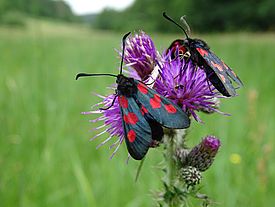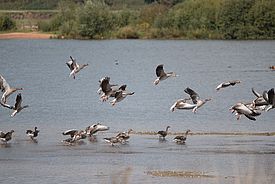13.7.2020 | Senckenberg Gesellschaft für Naturforschung/Beate Kittl | News WSL
The worldwide loss of species is sufficiently documented. However, local biodiversity trends in Europe sometimes differ considerably from global patterns, an international research team with the participation of the Swiss Federal Research Institute for Forest, Landscape and Landscape Research WSL points out. In particular, the composition of species communities has changed considerably locally. The study, which appears today in the scientific journal "Nature Communications", has implications for the development of effective conservation strategies.
The global trend seems to be clear: For years, the species diversity among almost all groups of animals and plants has decreased at an alarming rate. “However, at the regional level the picture is more complex – here, local factors such as the loss of rare species and the establishment of new species play a significant role in the overall results,” explains Prof. Dr. Peter Haase, Head of the Department of River Ecology and Conservation at the Senckenberg Research Institute and Natural History Museum Frankfurt, and he continues, “Ecosystem functions – and the associated benefits for humans – are always related to the respective local diversity and abundance of species, and they cannot easily be scaled ‘upward.’ Therefore, it is essential for us to know the different biodiversity trends in each ecosystem to be able to implement sustainable protection measures.”
Together with an a team of 64 international scientists, including the WSL for Switzerland, Haase evaluated and correlated 161 long-term measurement series from 115 locations in 21 European countries. This comprised over 6,200 marine, terrestrial, and aquatic species from nine biogeographic regions, including insects, birds, and flowering plants. Most of the study sites belong to the global network “Long-Term Ecological Research (LTER),” an international association for long-term interdisciplinary environmental observation.
WSL contributes to this study with its Long Term Forest Ecosystem Research (LWF), the study plots of which are part of the LTER network. Between 1994 and 2011, ground vegetation was recorded on 15 LWF plots. "The long-term series of measurements of more than 30 parameters allows us to investigate long-term changes in the environment, such as those shown in this study, on a regional to global level," says Marcus Schaub, head of the WSL Ecophysiology Research Group and Swiss coordinator of the LTER network.
Increased diversity in northern Europe
The researchers’ analysis reveals that in large areas of Central and Southern Europe, neither the species diversity nor the number of species and individuals underwent changes, while Northern Europe shows an increase in diversity and species numbers. The latter may be partly attributed to rising temperatures in the course of global climate change. Moreover, in many parts of Europe the traditional fauna and flora is being replaced by new species that are usually adapted to warmer conditions. In regard to this observation, the study’s authors caution that most of the time series started no earlier than the 1980s, at which time a significant loss of species had already become apparent. “In addition, the trends can differ significantly depending on the biome and the taxonomic group. While we were able to observe a biodiversity increase in marine areas over the study period, this was not the case in streams. On average, the diversity of bottom-dwelling algae decreased, while birds and aquatic invertebrates showed a surprising upward trend. This illustrates that the trends are not always the same across entire species or ecosystems,” explains Pilotto.
Based on their results, the team calls for an expansion of biodiversity time series and the standardization of European measuring methods in the different habitats. “This is the only way we can successfully develop meaningful conservation measures for the individual regions and their fauna and flora,” adds Haase in closing.
Original press release of the Senckenberg Naturmuseum Frankfurt
Contact
Links
Francesca Pilotto et al. (2020): Meta-analysis of multidecadal biodiversity trends in Europe. Nature Communications, https://doi.org/10.1038/s41467-020-17171-y (pdf)
Copyright
WSL and SLF provide the artwork for imaging of press articles relating to this media release for free. Transferring and saving the images in image databases and saving of images by third parties is not allowed.

